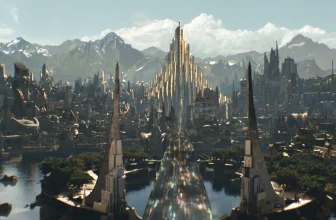Come and Experience Architecture Through a Writer’s Eyes!
Architecture is a form of art and so is writing. What will come about if we consider the two arts, apparently so different one from the other, collaborating together? It should be the art of writing about architecture. Sometimes, it is done purposely, while other times it is just fortuitous and it’s a reader duty to find this connection. Let’s briefly consider and try to guess what architecture and poetry really have in common.
First of all, we could say that an architect and a writer share an aim: the one to build unforgettable spaces. These could be real and be experienced or just be imagined, nevertheless their making process is extremely similar. After all the architect and the writer are craftsmen working with fragile and light materials, such as glass or steel and words. Let’s consider, even in an amusing way, the structure of a building and of a poem, for instance.
Even the most apparently simple piece of writing hides a complex and wise use of the smallest elements and an in-depth study of punctuation and on the other hand are architectural details. The first aim is to create harmony, which basically requires a musical juxtaposition of elements. Those elements of poetry are accents, pauses and punctuation that find their architectural equivalent in joints, windows, doors, or hallways. Just as a poem is divided in stanzas, thus a building presents different rooms. Furthermore, they both are remarkable for their visual power. Think about how many times while walking beside a construction we remain speechless in front of the tangled and solid structure of beams and pillars hidden behind a contemporary open space building, and we take a picture of them. The elements of the material space become characters belonging to a narrative space that the visitor pleasantly discovers while walking through. In the same way, the use of metaphors or similes thanks to their visual power leads the reader in picturing those spaces as if they were real. A writer can have the power to transform a narrative space into a material one through his words. It is exactly because architecture and writing are similar that it can also happen that a writer decides to write about an existing space, guiding us in the discovery of it. There is no right way to write about architecture, just as there is no unique way to make a project; it is a matter of creativity.
Here are three books which willingly or unwillingly, have defined a strict connection with architecture and have become unmissable on an architect’s library shelf.
Invisible Cities, by Italo Calvino (published in 1972).
It is a collection of tales about imaginary cities with feminine names. The cities narrated are 55, and all of them are part of the unreal journey made by Marco Polo (the main character) who described them to the Emperor Kublai Khan. The fascination of the Emperor with Polo’s stories is the same of the reader. The cities were truly imaginative settings but the writer’s words – misleading readers even up until now – made it plausible and visible. The cities are personified and are connected to a particular category (memory, desire, signs, eyes, dead, sky …). It is a book that can be used as a starting point for an accurate analysis of contemporary cities, what they can offer and where they lack.
Calvino clearly transformed a narrative space into a material one, many efforts were made by illustrators in order to put the plan on a blueprint. And the issue is that each reader had in some way created in their mind a personal version of a city and a personal itinerary. We can choose to read the tales – and explore the city – following the route indicated by Calvino, or create our personal itinerary. What really matters, is that at the end of the reading – our journey – we will have the feeling of having explored them and we will never have enough of visiting them.
America, by Jean Baudrillard
It is a detailed and remarkably guided tour of American contemporary cities and its inhabitants. The book was published by the French philosopher in 1989 and it is a visual and accurate trip through American buildings, the streets and even the empty spaces between them.
Baudrillard’s aim was to sing the shared and hyperreal collective identity inhabiting the cities of New York, Los Angeles and Salt Lake City, creating an apparent equality and democracy. In this paradoxical society nonconformity causes ostracism; Baudrillard’s America is a land without people, but persons wearing masks and living in solitude in the crowd. In traveling by cars – which are probably the real inhabitants of the city – Baudrillard, with both admiration and disillusion experiences the speed. Speed is the essential tool for incessant progress and gradual oblivion, for quickly reaching beauty and utopia; the speed which creates voids and thus the desert- visual and cultural- which ennobles spaces and even the obscene.
He refers mostly to in-between and empty spaces created by the buildings and the way they are positioned in the street in order to create proper urban spaces. It is an in-depth description of the urban space, which goes beyond the mere technical achievement and that make us meditate on what is hiding behind and between these majestic buildings.
The Architecture of Happiness, by Alain de Botton
Raise your hand whoever has not watched the movie 500 days of Summer! It is become a cult movie for the new generation! There is a scene, where the male protagonist – a failed and disillusioned architect – talks about his favourite book, which is indeed The Architecture of Happiness.
Alain de Botton published his non-fictional book in 2006. In six chapters he tries to delineate how our identity is linked to the place we inhabit indeed. He guides us through a consideration of what really architecture mean to us; which kind of emotions it can cause and how it can influence our life. De Botton encourages a series of evaluations about the places we occupy and why they really matter to us.
By: Alessandra Zucchetta








